by Julia Jones
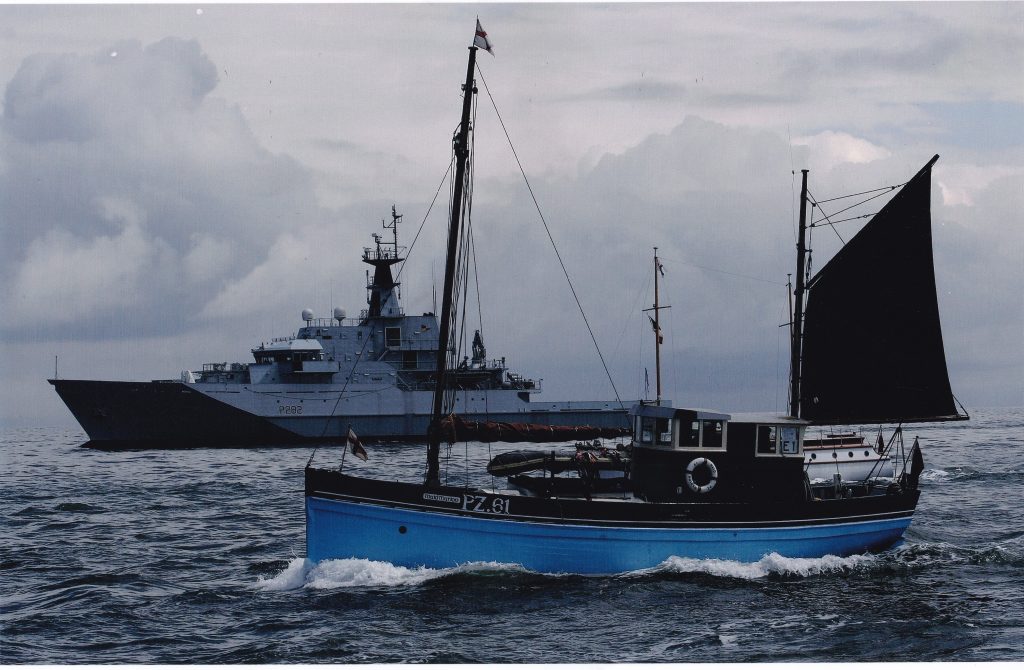
Maid Marion passing HMS Severn with the Association of Dunkirk Little Ships (ADLS).
Maid Marion (PZ 61) has been a familiar sight on the River Deben for over 60 years. It was in 1964 that her new owner John Hunt, together with David Mellonie of Small Craft Deliveries brought her from her original home in Cornwall to the mooring at Ramsholt, just down river from the Quay, which she has occupied ever since. This year, 2025, she reaches her 100th birthday.
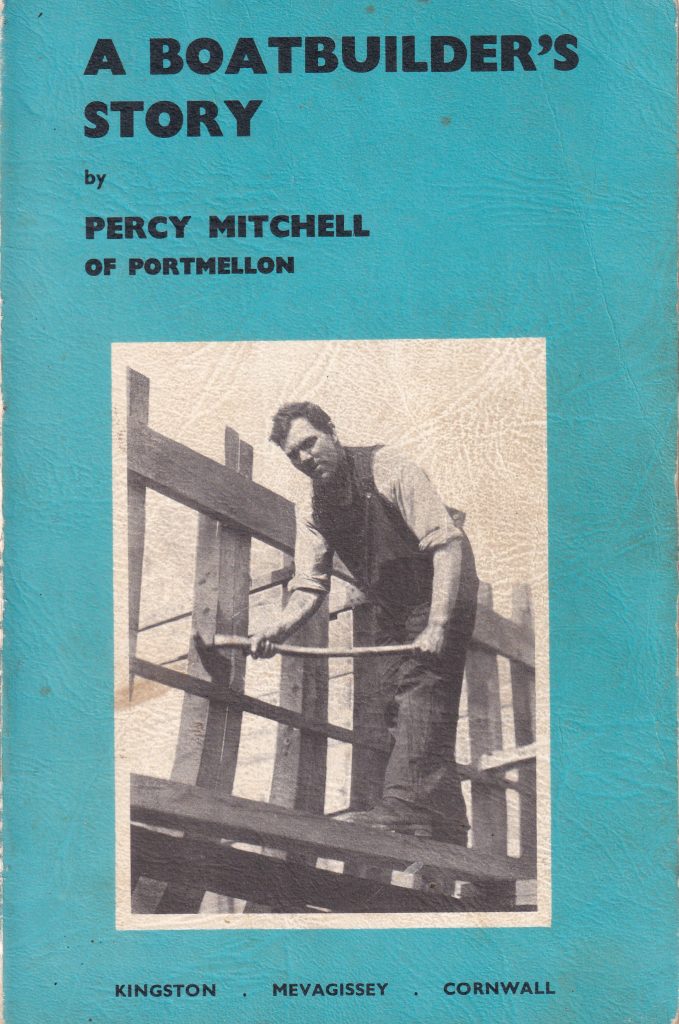
Percy Mitchell’s autobiography.
Maid Marion was built by Cornish boat builder Percy Mitchell who became one of the most famous and highly respected builders of traditional Cornish craft – particularly a type of open boat called the ‘tosher’. Maid Marion, however, is a fishing lugger and was Mitchell’s first big commission. She came close to ruining him, but in the longer term was the foundation of his success and perhaps his reputation as an ‘artist in wood’.
Mitchell was just 23 and working in Mevagissey when two brothers, Herbert and Joe Husband asked him to build them the 39’ lugger. He’d only recently become his own boss and didn’t have either the tools or the space to build such a comparatively large vessel. She was to be pitch pine on oak and he hadn’t even got a bandsaw to cut the heavy frames. He didn’t lack determination or initiative though. He’d only had a rudimentary education but had taught himself boat design from studying drawings in an old encyclopedia and had been been trained to use hand tools as an apprentice in Mevagissey.
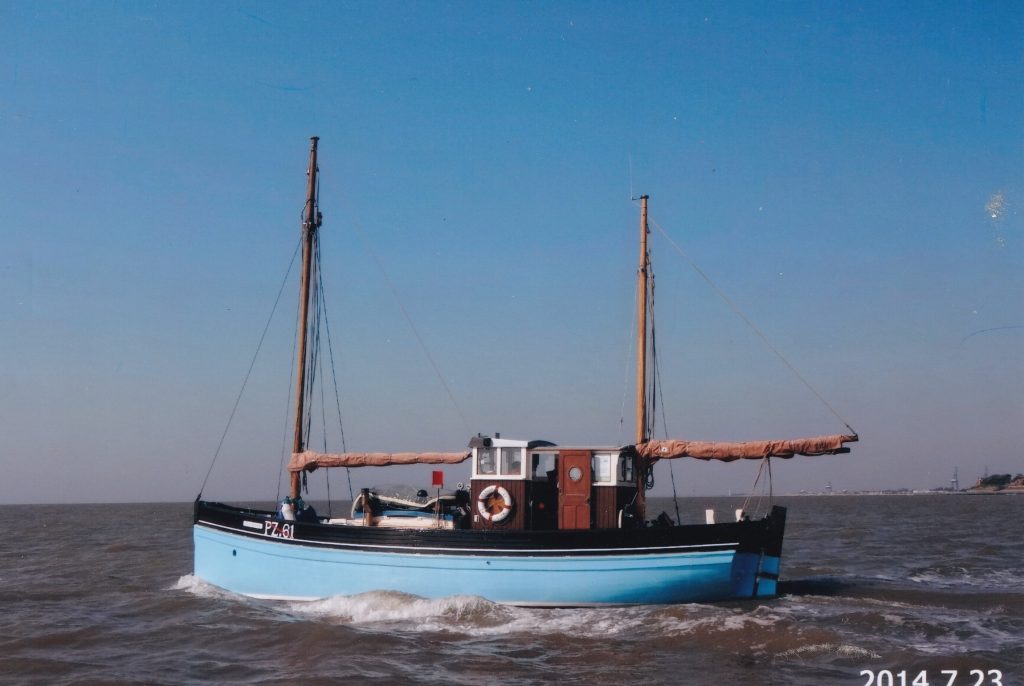
Maid Marion painted in characteristic Cornish fishing boat blue.
He drew out the lines for Maid Marion (then called Westward) full size on a big drawing board made of tongue and groove boarding and found some land in neighbouring Portmellon which would give him enough space to build her, and which he could rent for £4 a year. Then he packed up his patterns for the boat, took his adze and bevelling board and went to live at a timber merchants in Liskeard for a fortnight. During that time, he didn’t just pick out all the timber he needed for the heavy structural sections, he got the timber yard to cut them into shape.
Back at home meanwhile the three apprentices who would be working with him had moved their equipment from Mevagissey to Portmellon and his uncle Tom had built a lean-to shed so they could work on small jobs indoors if it rained. Then all the heavy timber was taken by rail Liskeard to Looe, then trading ship Looe to Portmellon, where it was unloaded onto the beach. ‘I’d never do it again,’ wrote Percy later. ‘The struggle to get all the heavy oak up the beach and into the yard was killing work and tried everyone’s strength to the limit.’
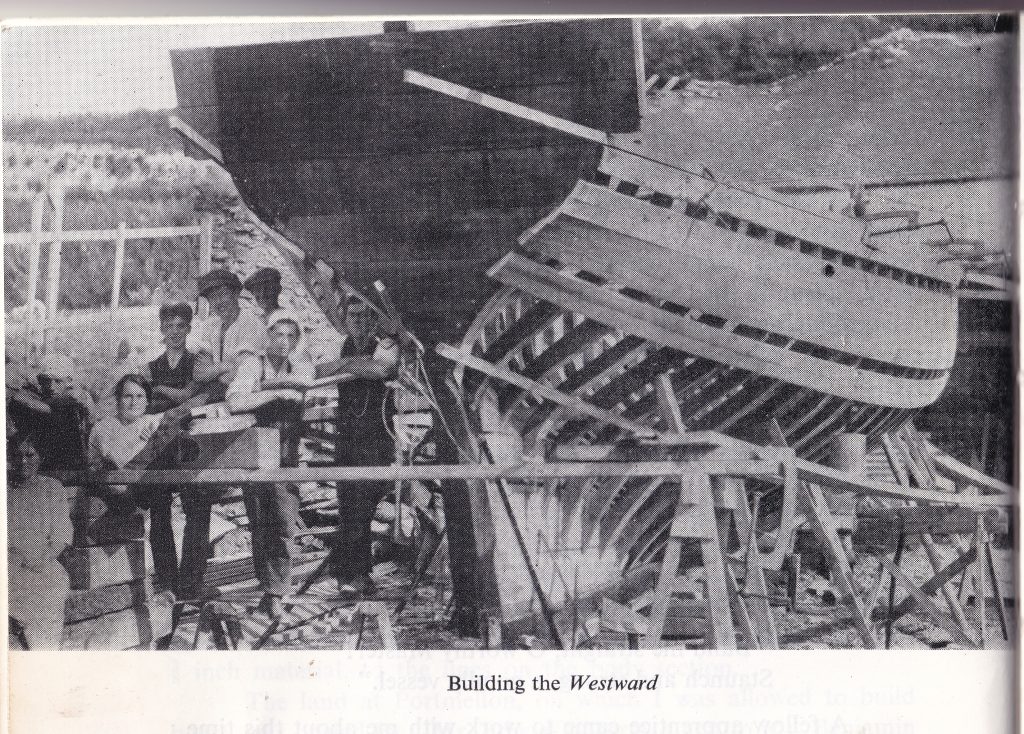
Westward under construction in Portmellon.
It was midsummer now and Westward (Maid Marion) had to be finished by mid-October for the herring-fishing season at Plymouth. Percy was using new, non-traditional techniques for framing her out and it was a long while since any boat of this size had been built in the neighbourhood. Most of the local fishermen and their families got into the habit of taking their evening and weekend walks to Percy’s open yard, to watch the boat’s progress and discuss the young man’s methods. Percy wrote,’ It was lovely weather and working out of doors was a pleasure. I didn’t see my parents during the week, only at weekends as when I got home in the evenings, they had gone to bed. My supper was on the table and my breakfast for the next day laird, also my dinner and tea packed ready to take away.’
They got the decks laid before the rainy weather began and by mid-October she was finished. She had a wheelhouse and accommodation for five, wheel steering and a new arrangement for her mizzen – an important feature for a fishing lugger, needed to help keep her head to wind. The engines would be installed after she was launched – but how was she to reach the sea? She would have to be pulled along the road to the beach. Percy had no winch so all the pulling would have to be done with block and tackle and the boat moving on rollers in wood frames. Worse than that, he had realised that his estimating had been wrong. He’d spent too much on her top-quality timber and he was about to run out of money. He had to pay off his workmen and hope for voluntary help to heave the boat along the road and across the beach to the water. There was at least a road across the beach, which there hadn’t been when they brought the timber ashore, but still the task was daunting. Maid Marion is SOLID – think of the challenge when you’re next at Ramsholt and see her lying calmly at her mooring. And don’t forget all that there is of her under the water. She draws 5’.
‘It took three days of hard slogging, luff on luff (one double block tackle pulling on the hauling part of the main double-block tackle). The cornering and right-angled turn at the top of the beach took a lot of prizing and jacking and pulling had to be done from the gateways along the front of the cottages.’
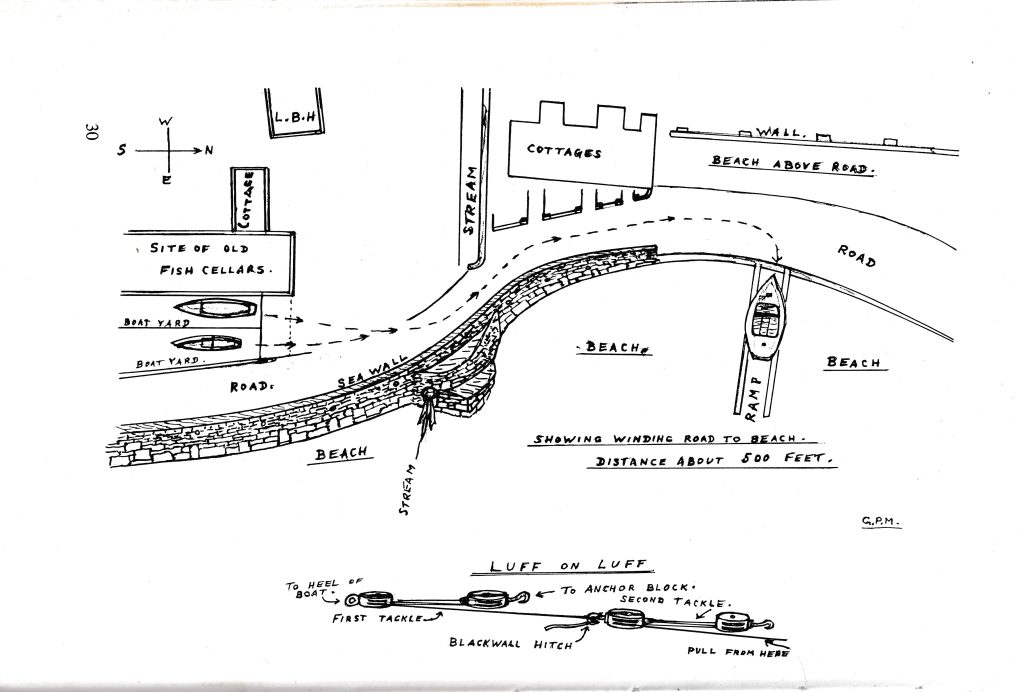
Map of her three-day journey to the beach and diagram of tackle used.
There was some damage which Percy later had to make good but with his apprentices, one of their dads, the boat’s owners, a retired naval man and a passing workman on his way home to tea, she finally reached the water, the masts and engines were installed and Westward (FY 227) was away for the herring fishing. Leaving Percy £100 in debt, still with no proper boat building shed and winter coming on…
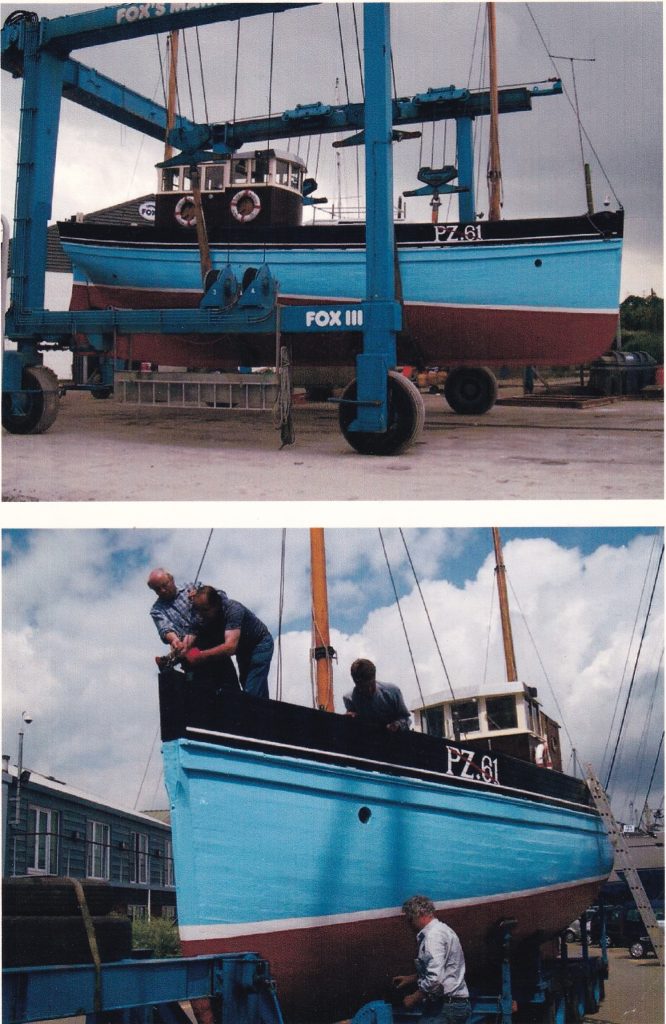
Maid Marion out of the water for a survey.
He survived and eventually prospered. She was sold by the Husband brothers, in 1935, after some family quarrel. Her new owner, John Orchard, was a pilchard fisherman at Porthleven. He renamed her Maid Marion after his young daughter, although Cornish superstition suggests changing names might bring bad luck. Presumably that was when she acquired her Penzance registration PZ 61 (which is now lightly struck out as it’s been a long time since she last fished in Cornwall).
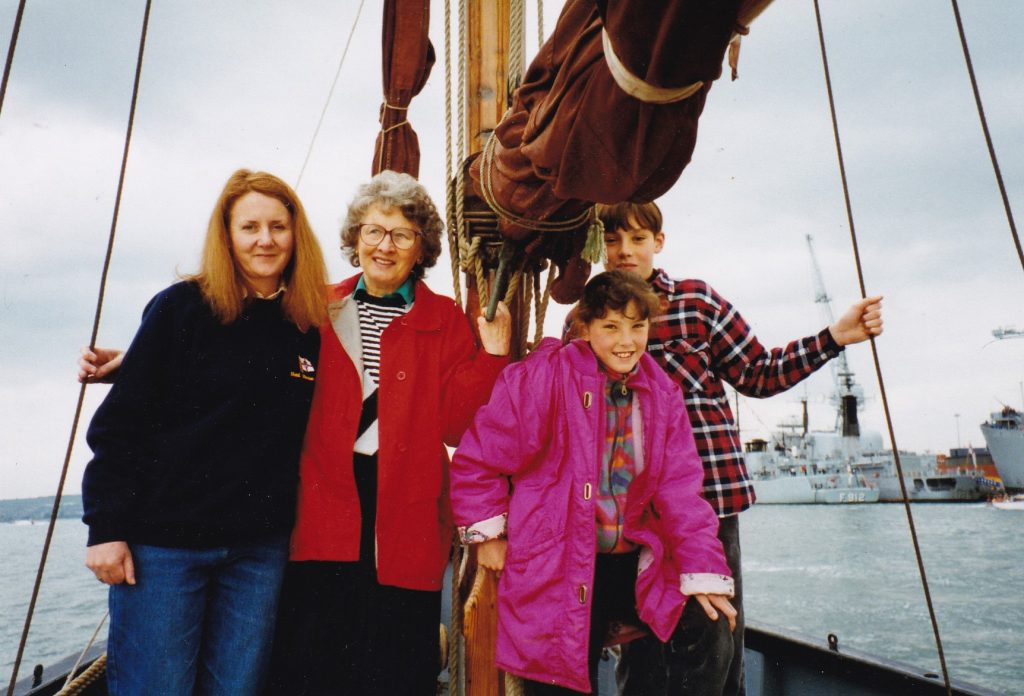
John Orchard’s daughter Marion (centre), revisits the boat named after her.
When the call came for all shallow draft boats to report for Operation Dynamo (the Dunkirk evacuation) John Orchard set out to take her to Dunkirk. He didn’t get there in time but instead was held at Devonport and became part of Operation Ariel (June 15-25 1940), the evacuation from France’s western ports. Maid Marion collected a boatful of soldiers from Le Havre and thus earned her place among the Dunkirk Little Ships. As a member of that Association, she has sailed to Dunkirk every five years since 1990 (excluding the pandemic year).
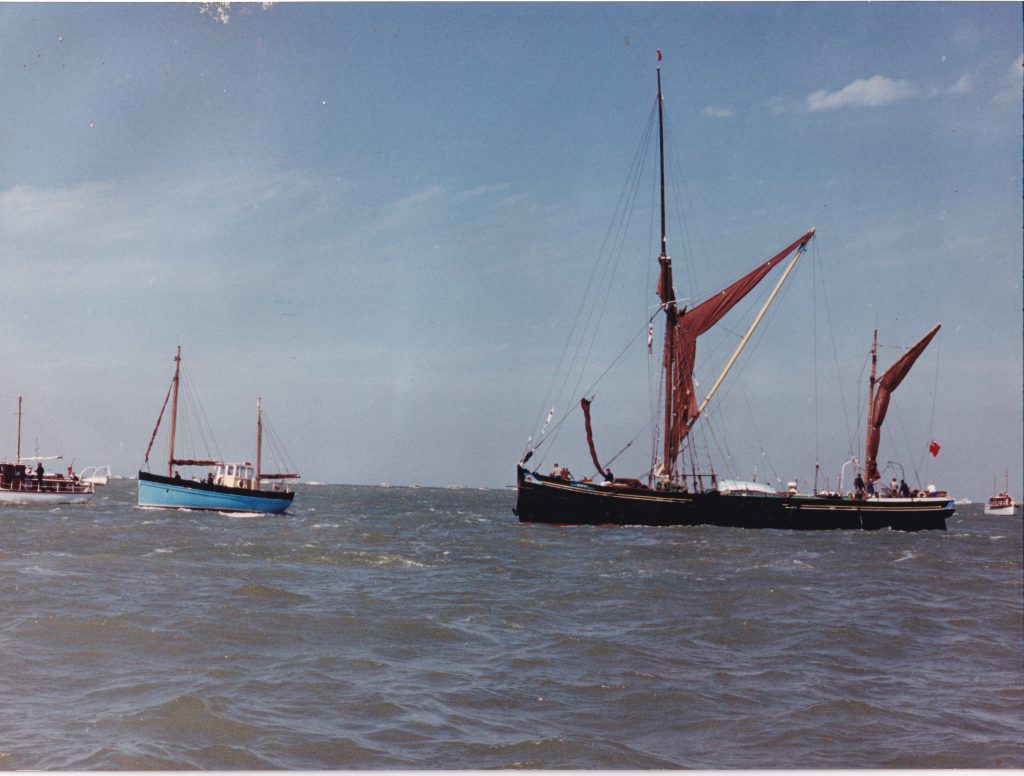
Maid Marion with the Association of Dunkirk Little Ships.
After the war she was sold to Jack Silley, Chairman of Falmouth Docks, who converted her for pleasure fishing. He was a rich, energetic, visionary businessman who had a great impact in Falmouth, leading the development of their dry dock for the new supertanker era. He also had a farm in Essex. This was managed by John Hunt, who had a personal passion for fishing. Jack Silley invited him to Cornwall to fish on board Maid Marion. Then, almost out of the blue, a year later, he offered to sell John the boat.

David Mellonie’s photo of Maid Marion on arrival at Ramsholt 1965.
And that was how, sixty years ago, Maid Marion arrived at Ramsholt. Her fishing then was mainly done for pleasure in Hollesley Bay. John Hunt had a stroke in 1980 and laid the boat up. Some years later the idea was to up and sell her. Then David, John’s son decided to use her first. He fell in love with her, and she remained in the family. David hadn’t really known about Maid Marion’s part in the 1940 evacuations but is now one of the active members of the Association of Dunkirk Little Ships and has returned to France every five years since 1990 (excluding the pandemic year). This summer she will be part of the fleet for the 85th anniversary crossing.
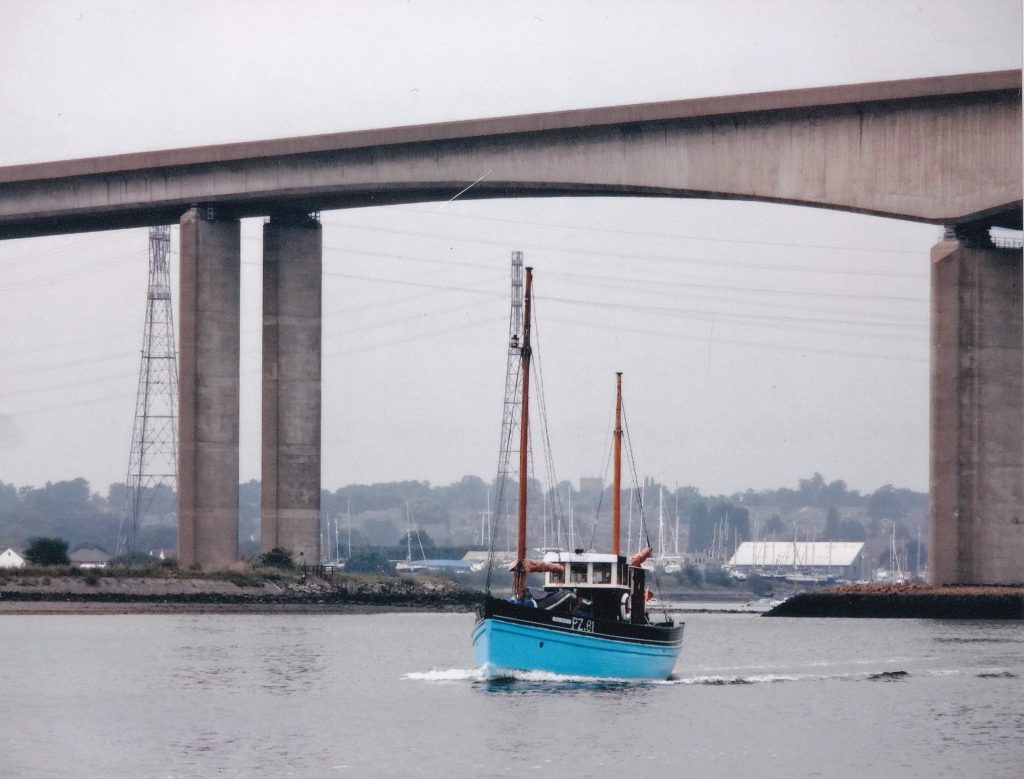
Maid Marion on the River Orwell.
Julia Jones
Julia Jones is the editor of The Deben magazine.

